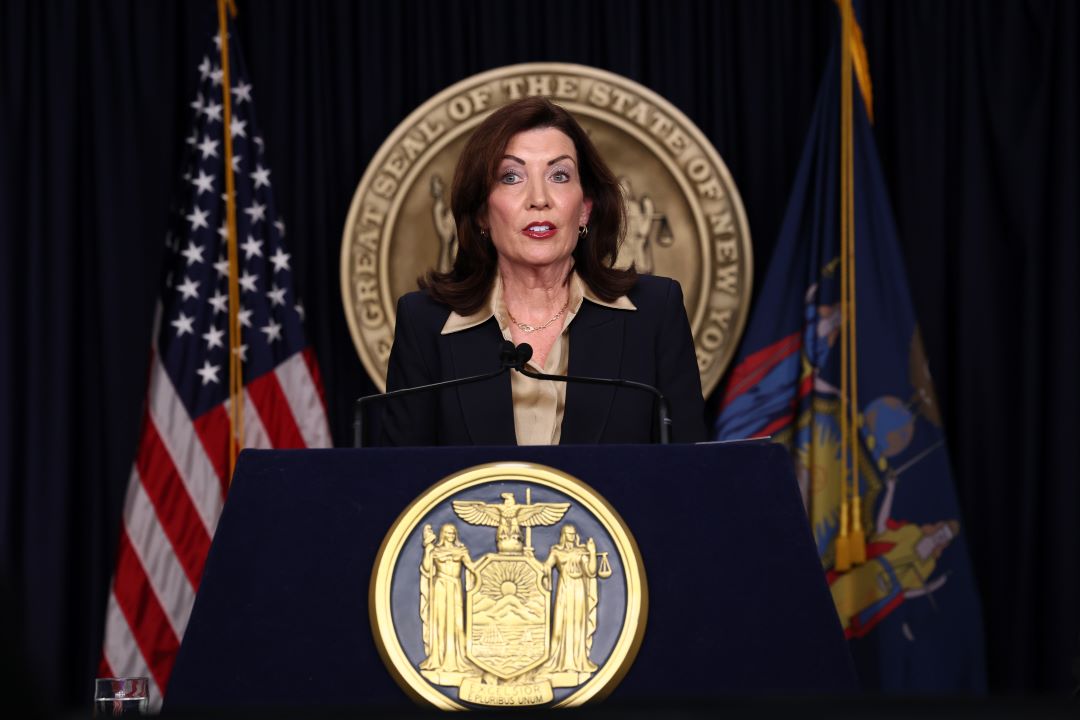NY's Still Too Business-Unfriendly
Reciting a litany of economic challenges facing New York soon after he took office as governor a year ago, Andrew M. Cuomo declared: "We have the worst business tax climate in the nation, period."
In the Tax Foundation's latest top-to-bottom ranking of 50 state business tax climates, New York comes in at No. 49. So the governor can now turn that period into a comma. We have the worst business tax climate in the nation, except for New Jersey.
Smart Policy, Straight to You
Don't miss the newsletters from MI and City Journal
Nothing to boast about there, obviously. It remains to be seen whether Cuomo will produce the kind of climate change our economy needs.
He got off to a strong enough start. During his first six months in office, Cuomo reined in spending to close a $10 billion budget gap without tax hikes, and pushed through a cap on local property-tax growth.
Unfortunately, he ended 2011 by muddying the state's tax policy waters. In December, Cuomo and the State Legislature agreed to raise a net $1.5 billion by temporarily extending sharply higher rates for individuals earning $1 million and couples earning $2 million, offset by small temporary rate cuts for the middle class and a partial rollback of the mass transit payroll tax in the metropolitan region.
Cuomo's grade on tax policy thus remains an incomplete, pending promised "revenue-neutral" tax reforms before the latest changes expire in 2014. (In New Jersey, meanwhile, Gov. Chris Christie is seeking an income tax cut.)
To make any lasting progress in reducing New York's heavy state and local tax burden, Cuomo must tackle the structural drivers of high government spending. He has a "redesign team" working on one of them -- the nation's most expensive Medicaid program. So far, the team says it is meeting its spending targets. But the governor's budget forecasts that a million more New Yorkers will be eligible for Medicaid coverage by 2015. As time goes on, Cuomo's ability to control state-funded Medicaid costs will hinge on iffy assumptions about future federal aid and managed care savings.
Medicaid aside, New York also has one of the nation's largest state and local government workforces, according to U.S. Census Bureau data based on March 2010 payrolls.
New York's average of 63 employees per 1,000 residents was well above the national average of 54. Only small states had larger ratios of government workers to population. And we not only have more employees, we also pay them more -- an average of $62,365, third highest among the 50 states. Only California and New Jersey were higher. Sure, it costs more to live here, especially downstate -- but high taxes help perpetuate those costs.
Government payroll measures don't include public pensions, which are also expensive in New York. Newly released Census Bureau data show the employee share of annual pension contributions in the Empire State is barely one-third the national average. New York ranked 46th in this category, the Citizens Budget Commission notes -- underscoring the importance of Cuomo's pension reform plan, which would require workers to pay a larger share.
One more ranking: The Competitive Enterprise Institute, a Washington think tank committed to free markets and limited government, has come up with what it calls a "Big Labor vs. Taxpayers Index." Based on an analysis of 1,150 labor laws and regulations, it concluded that public employee unions are more powerful in New York than anywhere else. The index put us at No. 50 -- or as the governor might put it, "the worst in the nation, period."
Until that changes, it's highly unlikely anything else will.
This piece originally appeared in Newsday
This piece originally appeared in Newsday

